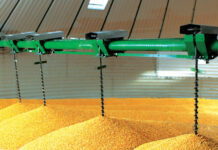“Global agricultural adjuvants market size will surge beyond USD 3.9 billion by 2027“– Global Market Insights Inc.
Farmers Business Network’s recent launch of a new lineup of agricultural adjuvants and crop nutrition products under its ‘Farmers First’ Brand, is unquestionably one of the latest notable developments in the global farming space. FBN believes that the rollout of new products, that optimize fertilizer efficacy and crop protection, is an ideal fit for farmers and agriculturists seeking crop input investment in 2022 and beyond.
The aforementioned launch is evidence enough that the agricultural adjuvants market is quickly gaining momentum in the global sustainable agriculture industry. Key developments and supportive initiatives unfolding new opportunities for market players reaffirm that the future of agricultural adjuvants will remain positive over the coming years.
Discussing crucial trends in the agricultural adjuvants market
Some of the important trends defining the industry scenario have been listed below:
- Rise in sustainable agricultural practices- Paving way for the launch of bio-based adjuvants
Consider the following facts-
- A UN report estimates the global population to increase by 2 billion people in the coming 30 years and peaking at nearly 11 billion in 2100.
- According to FAO, the world needs to produce about 60% of more food to feed the global population by 2050.
These parameters are the two biggest challenges for the agricultural market today, pushing the farmers to take up developments and initiatives that maximize their crop yields as safely and effectively as possible. This has opened new doors for sustainable farming practices, including the use of agricultural adjuvants. Farmers have begun valuing the compounds for their ability to enhance crop performance in a sustainable manner.
Given its rising demand, different agricultural adjuvant manufacturers are now rolling out potential solutions to support the farmers’ attempts to enhance crop productivity. For instance, in late 2020, Nouryon introduce a salt-free, sustainable adjuvant for customers. Dubbed Adsee AMP 40, the product is an all-in-one biodegradable invention that provides a more cost-effective solution for clients.
- Increasing role in fungicides- An upcoming avenue in the agricultural adjuvants industry
It is imperative to note that nearly 85% of plant diseases are caused by fungi. This has raised serious concerns among agriculturists and horticulture farmers, enabling them to make use of fungicides and additives that can effectively sabotage the growth of fungus on the crop and produce better yields. This has further pushed the development of fungicide adjuvants. These compounds may help improve disease control, by accelerating a fungicide’s penetration and enhancing its dispersion or spraying performance on the plant.
Its increasing prominence globally has led various agricultural industry giants to consider using and developing fungicide adjuvants to ensure better crop productivity. For instance, Attune Agriculture, in 2021, announced that it has received approval for Ampersand adjuvant to be used alongside fungicides in California. According to the company, the product is officially accepted for use with different types of pesticides in all 50 states.
Global Market Insights Inc. speculates the agricultural adjuvants industry share from fungicides application to register a CAGR of 5% through 2027.
- Africa could be the next big agricultural adjuvants market– Expanding food insecurity and the need for arable land will support escalating sales of agrochemicals
- According to the UN estimates, more than half of the global population explosion through 2050 is projected to occur in the African continent. Meanwhile, the population of sub-Saharan Africa is anticipated to double by 2050.
- Speculations have it that the agriculturists across the African countries could create a trillion-dollar food business by 2030, by undertaking proper practices.
The region thus depicts a strong need to increase agricultural growth by deploying agrochemicals, improved seeds, and other agronomic practices.
It is pivotal to note that crop losses by pests and fungal diseases are common and major roadblocks in Africa, affecting the required increase in agricultural production. This has led to the increasing application of agricultural adjuvants on farm crops. Africa is well known to make use of utility adjuvants owing to their ability to provide better application on desired plant or crop type.
Elaborating further, the agricultural adjuvants market share worldwide from the utility product segment is projected to depict a growth rate of 4.5% over the coming years.
While different countries are battling food insecurity and imbalance due to multiple factors like the COVID-19 outbreak and the Russia-Ukraine war, some companies are coming up with sustainable agricultural solutions that pave way for the sustenance of agricultural additives. For example, BASF announced bolstering its activities in R&D for sustainable agricultural inventions to aid constant help to farmers in overcoming economic and environmental challenges. BASF’s solutions are poised to be launched throughout the next 10 years, contributing to its goals of increasing its annual sales with a substantial contribution to sustainability.
With the global population expected to rise meteorically and the subsequent need for increasing food production, agriculturists have turned to products like agricultural adjuvants to ensure enhanced crop productivity and better yields. Strong resilience of the food service sector worldwide and emerging fast food trends across developing economies will bolster the need for higher and safer farm yield. Agricultural adjuvants market has, undoubtedly, much to look ahead through the next few years.
Source: https://www.gminsights.com/industry-analysis/agricultural-adjuvants-market









